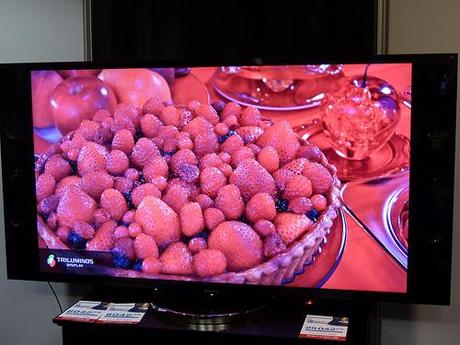By the end of 2013 there will be new TV technology, known as 4K TVs, that up the quality of HDTV by 4 times the pixels of television sets currently in demand. Here is what you can expect to see:

The Technology
After years of falling prices and profits, 4K is about to explode in the TV market. So, what is 4K, exactly? It stands for the 4,000 pixels of horizontal resolution (3,840 by 2,160, or more than 8 million pixels total) on an HD display. That’s 4 times the resolution of current HDTVs (1,920 by 1,080 resolutions, or more than 2 million pixels). The result is a product that’s sharper than what’s available in TV land.
Something you can look forward to is the new clear video, even on very large TVs. For example, the new 84-inch Sony has 10 speakers and also features 3-D video options, and all for an inexpensive cost, lighter, passive 3-D glasses, as well.
The Cost
The jump in quality sounds good, but the real question is what is the actual cost? Early adopters are going to bear the brunt of the cost. Ars Technica reports that Sony’s 55-inch Bravia model is about $4,999 while the 65 inch is about $6,999. Other companies showing Ultra HD at CES focused on much larger screens, driving the price up to about $25,000 for an 84-inch television. The 2,160 pixels are certainly attractive, but whether it gains widespread acceptance depends on whether or not the price comes down to what consumers can afford. This may take time since the shift over to higher-quality television and movies is going to take some effort and convincing. If the early adopters can’t display enough interest in Ultra HD, it might go the way of many 3-D televisions.
4K and 3-D
3-D was the last television technology to be featured, and just because you don’t see 3-D TVs in every American home doesn’t mean that it’s going away just because Ultra HD is here. Tech Radar reported that Ultra HD actually makes passive 3-D better. It takes care of the sharpness issue that current passive 3-D deals with, due to the limits on today’s HD technology.
The Content
One of the biggest issues with 4K television is that content isn’t being published at this quality. It is, however, being created with this resolution as it’s the standard quality for cameramen who use digital filming, according to CNN.com. There’s been some resistance to simply taking the masters of film and using those for 4K content and quality as the threat of piracy is on the minds of many filmmakers. Sony and Netflix are both taking action with creating content in 4K quality. Sony obviously will argue their offering, and they are in talks with broadcast providers. DirectTV already offers 3-D television packages, so they’re likely to be amicable to carrying 4K broadcasts.
Photo by Flickr user proacguy1
